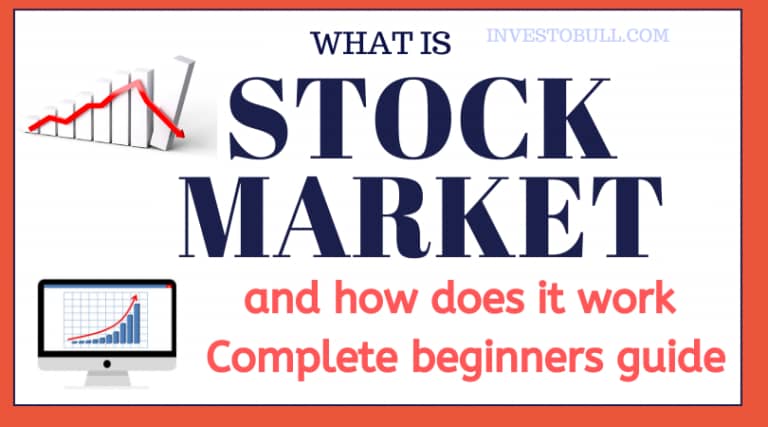Investing in stocks can be as exciting as riding a roller coaster. You feel the adrenaline rush, but the ups and downs can turn thrilling moments into hair-raising ones. Before you hop on, wouldn’t you want to know if the ride is safe? Similarly, understanding the right indicators before you invest in stocks can make a huge difference in your financial journey. In this blog post, we will dive deep into the three key indicators every investor should watch: **Earnings Per Share (EPS), Price-to-Earnings (P/E) Ratio, and Market Trends**. Are you ready to transform your investing decisions with knowledge?
—
What Are Key Indicators?

Before we explore these three indicators, let’s clarify what we mean by “key indicators.” In the stock market, key indicators are metrics or signals that investors look at to make informed decisions. They help paint a picture of a company’s health and its stock’s potential future. Without these indicators, investing can feel like playing a guessing game—one that can cost you dearly!
1. Earnings Per Share (EPS)
Definition: EPS is a company’s profit divided by the outstanding shares of common stock. It tells investors how much money a company makes for each share they own.
- Why is it Important?: EPS is a crucial indicator of a company’s profitability. When EPS increases, it often indicates that the company is doing well, which can attract more investors.
According to a report from the S&P 500, the average EPS growth rate for companies over the last year has been around 15%. This statistic highlights that many companies are becoming more profitable, which can lead to growth in stock prices.
As Warren Buffet famously said, “The stock market is designed to transfer money from the Active to the Patient.” This indicates that monitoring EPS can help investors find those patient opportunities for investment.
How to Use EPS?
- Comparative Analysis: Look at EPS trends over multiple quarters. Is it increasing consistently? This may point toward a stable company.
- Industry Comparison: Compare a company’s EPS with others in the same industry to get a benchmark of performance.
FAQs on EPS
Q1. What is a good EPS number?
A: A good EPS number varies by industry, but consistently rising EPS figures are often a good sign.
Q2. Should I buy a stock with negative EPS?
A: Negative EPS indicates financial struggles, and it’s usually advisable to be cautious or avoid such stocks.
2. Price-to-Earnings (P/E) Ratio
Definition: The P/E Ratio compares a company’s current share price to its per-share earnings. It helps investors gauge whether a stock is over or undervalued.
- Importance of P/E: A high P/E ratio might indicate that a stock is overpriced, while a low P/E can suggest undervaluation—this makes it an essential tool for valuation.
As of October 2023, the average P/E ratio for the S&P 500 companies is around 22, which is slightly above the historical average of about 18. This suggests that stocks might currently be overvalued.
Expert Insight: According to finance professor Aswath Damodaran from NYU, “Valuation is an art, but the P/E ratio is one of the most reliable indicators in an investor’s toolkit.”
Understanding P/E Ratio
- Cyclical vs. Growth Stocks: High-growth companies often have higher P/E ratios, while more stable companies typically have lower P/E ratios.
- Forward vs. Trailing: There are two types of P/E ratios—trailing (based on past earnings) and forward (based on future earnings projections). Always check which one you are looking at!
FAQs on P/E Ratio
Q1. What does a P/E ratio of 1 mean?
A: A P/E of 1 suggests that a company is earning as much as its stock price, potentially indicating it’s undervalued.
Q2. Can companies with no earnings have a P/E?
A: No, a company with no earnings will have a P/E ratio that is undefined
3. Market Trends
Definition: Market trends refer to the general direction in which the market or a particular stock is heading. This can be influenced by economic data, news events, and investor sentiment.
- The Importance of Trends: Investing based on market trends can help you ride the wave of success rather than fight against it. If the trend is your friend, you’re more likely to make fruitful decisions.
According to University of Chicago research, 70% of stocks follow the market trend, emphasizing the importance of assessing market conditions before investing.
Expert Opinion: “In investing, what is comfortable is rarely profitable,” says Robert Arnott, a famous investor. This means that paying attention to market trends, even if it challenges your comfort zone, is essential for successful investing.
How to Analyze Market Trends
- Technical Analysis: Use charts and patterns to understand the stock price movements over time.
- Sector Performance: Different sectors may perform better under different economic conditions. Keep an eye on which sectors are growing.
FAQs on Market Trends
Q1. How can I identify a market trend?
A: Look for prolonged price movements in one direction or significant changes in volume.
Q2. Should market trends dictate all my investment decisions?
A: While trends are important, they should be one of several factors in your investment strategy.
Making the Right Decisions
Now that we’ve covered the three key indicators, how should you use this information?
- Build a Portfolio: By analyzing EPS, P/E, and market trends, you can select a well-rounded mix of stocks that align with your financial goals.
- Stay Informed: Regularly check financial news, attend webinars, and read reports to keep your knowledge up-to-date.
- Risk Management: Always consider your risk tolerance and investment timeline. Never invest more than you can afford to lose.
FAQs on Investment Decisions
Q1. What if a company has high EPS but also high P/E?
A: This may suggest that while the company earns well, its stock may be overpriced, requiring further analysis.
Q2. Is it okay to invest without following these indicators?
A: While it’s possible, being informed greatly increases your chances of success.
Investing in stocks doesn’t have to be a daunting challenge. By focusing on key indicators like Earnings Per Share, Price-to-Earnings Ratio, and Market Trends, you can make educated decisions that lead to successful investments. Are you ready to strap in for the thrilling ride of the stock market, guided by knowledge rather than guesswork?
Resources for Further Learning
– [Investopedia – Earnings Per Share](https://www.investopedia.com/terms/e/eps.asp)
– [Yahoo Finance – P/E Ratio](https://finance.yahoo.com)
– [University of Chicago – Financial Research](https://www.chicagobooth.edu/research)
Invest wisely, explore these indicators, and enjoy the adventure of stock investing!
—
With these insights, you’re now ready to make informed decisions in your stock trading endeavors. Happy investing!










sbdwr7
8sh8ws
a2w8e3
711nm9
55tkx9